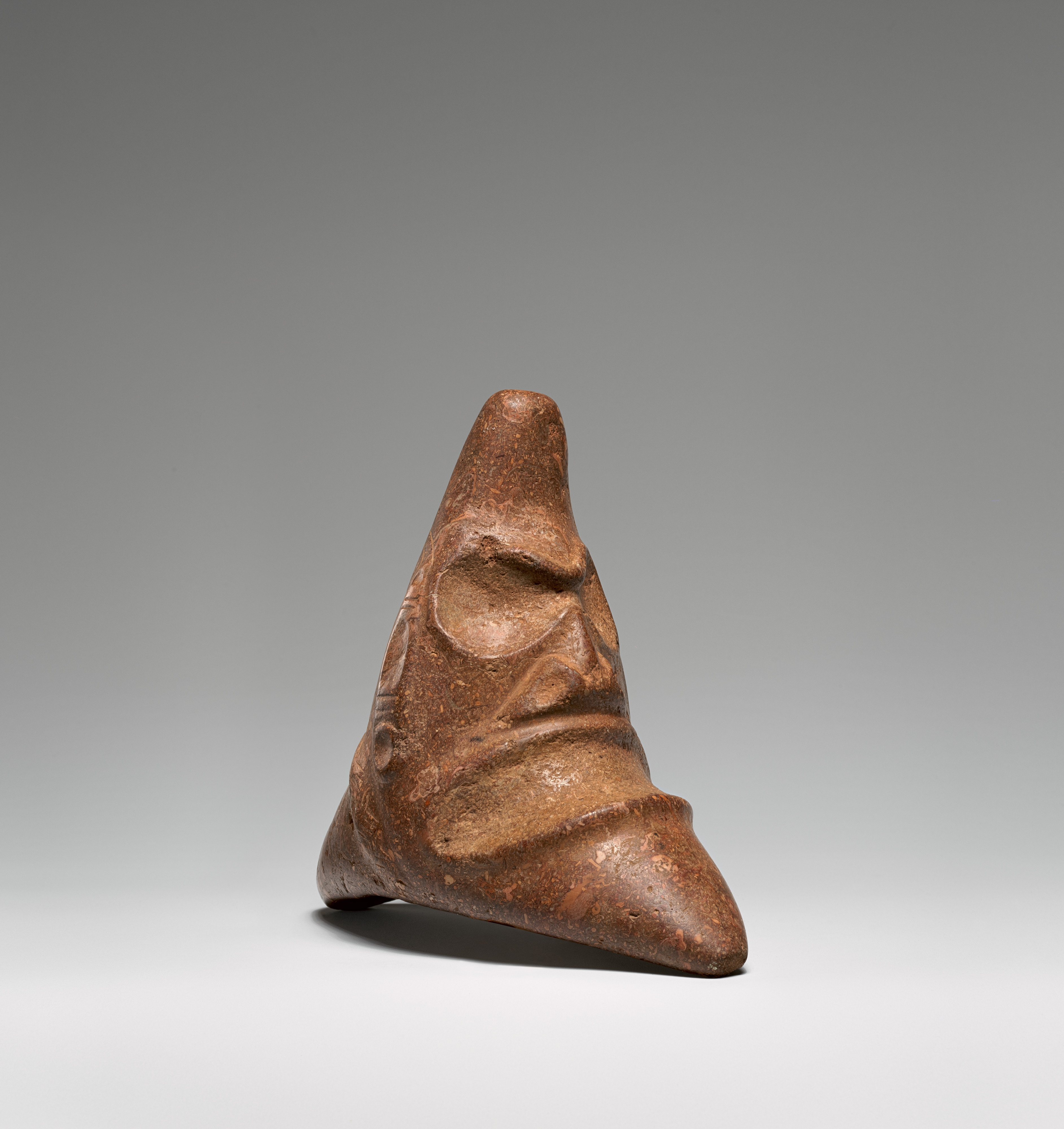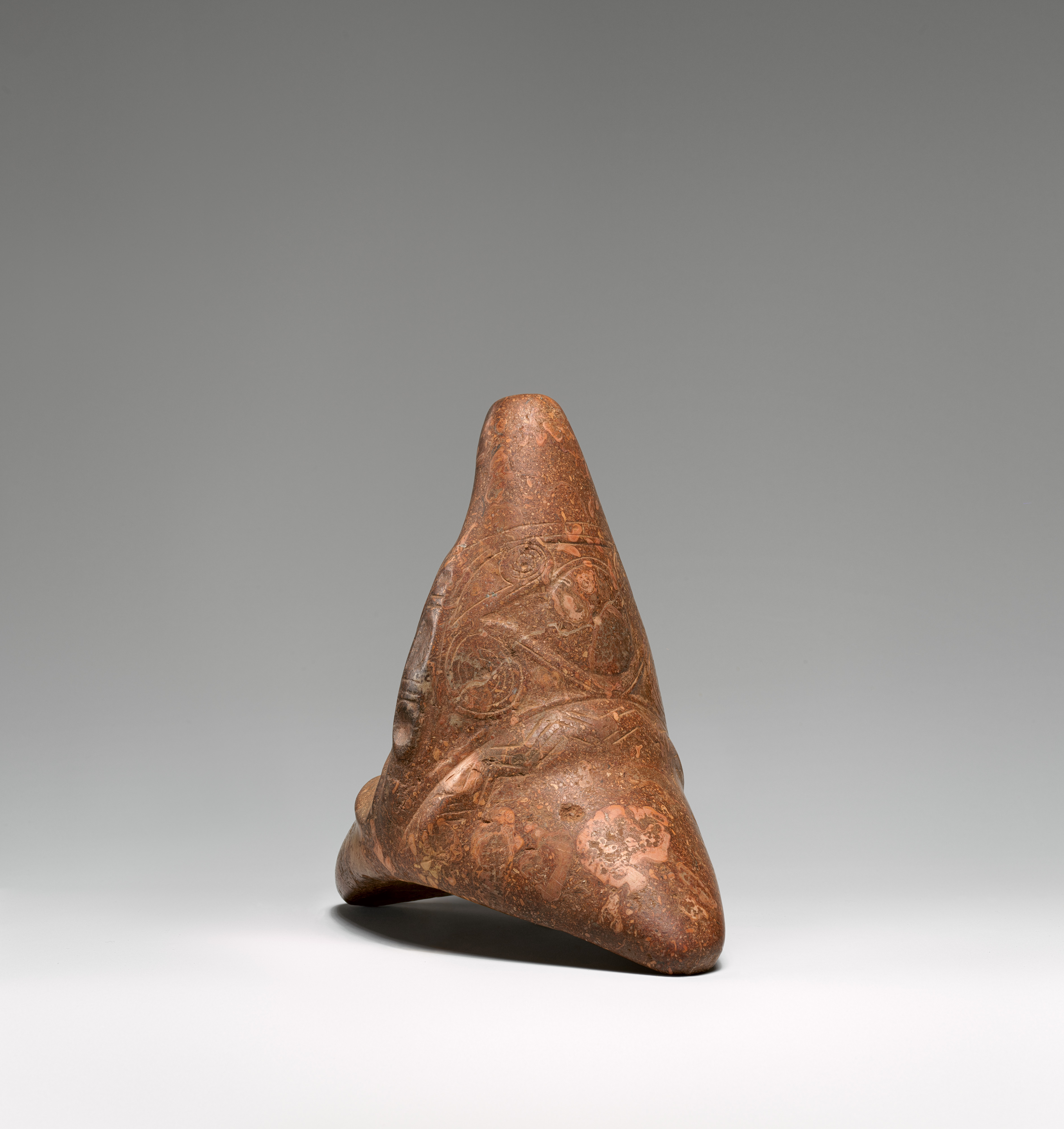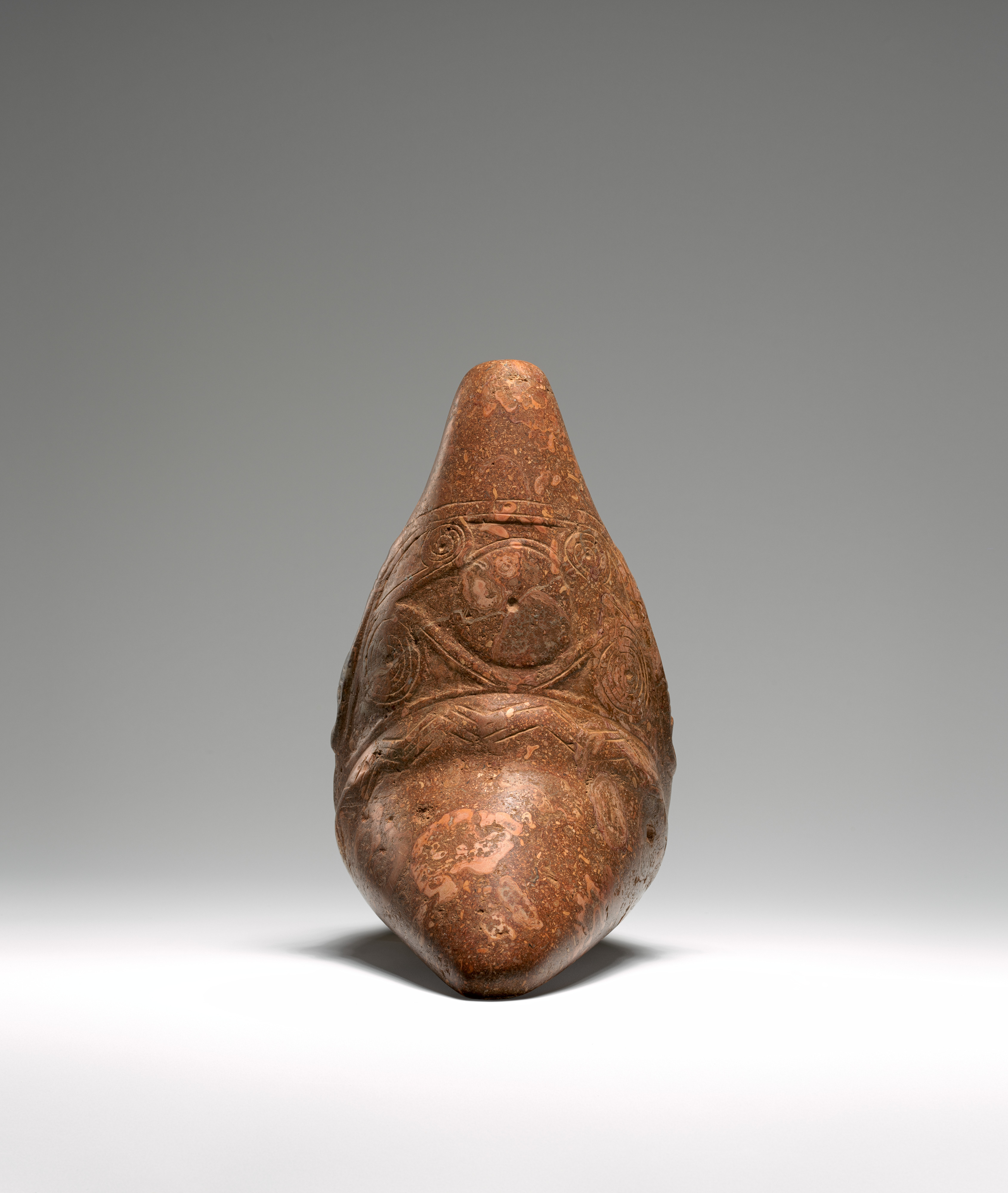Three-Cornered Stone (Trigonolito)
Not on view
Portable-sized sculptures, known as three-pointed stones or trigonolitos, were described by the Spanish chroniclers as having a connection to yucca or cassava, a staple root crop in the Caribbean. Three-pointed stones come in various sizes, from handheld to quite heavy, and feature a diversity of imagery ranging from anthropomorphic and zoomorphic phone. They mainly come from the Greater Antilles, but examples have been found as far south in the windward islands as The Grenadines.
Creative sculptural expression, both extractive and additive, for the Taíno peoples was intertwined with sacred concepts such as zemí, ceremony, and rulership. Zemí figures were used as stands, reliquaries, or personal adornment. >. Zemí (or cemí) is a term used by Taíno peoples, the diverse societies that inhabited the Antilles archipelago before European contact, that linguistically relates to a quality akin to sweetness. Zemí refers not to an object or image but to an immaterial, spiritual, and vital force pertaining to deities and ancestors. There are several known zemí identities recorded by the Spanish, some of which have been linked to archaeological images.
Due to rights restrictions, this image cannot be enlarged, viewed at full screen, or downloaded.
This artwork is meant to be viewed from right to left. Scroll left to view more.





